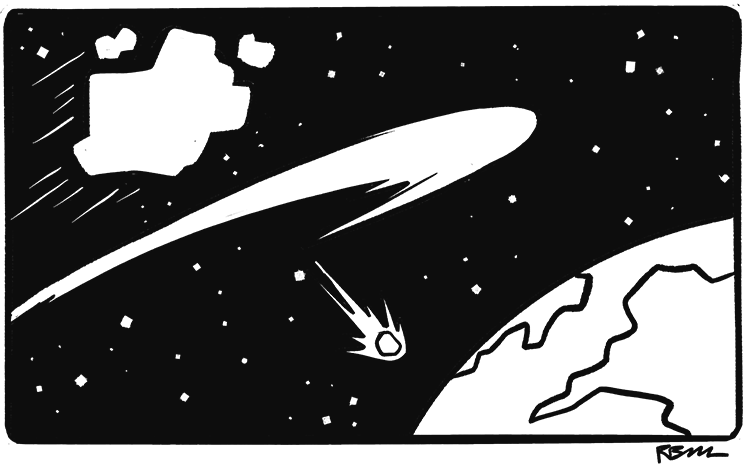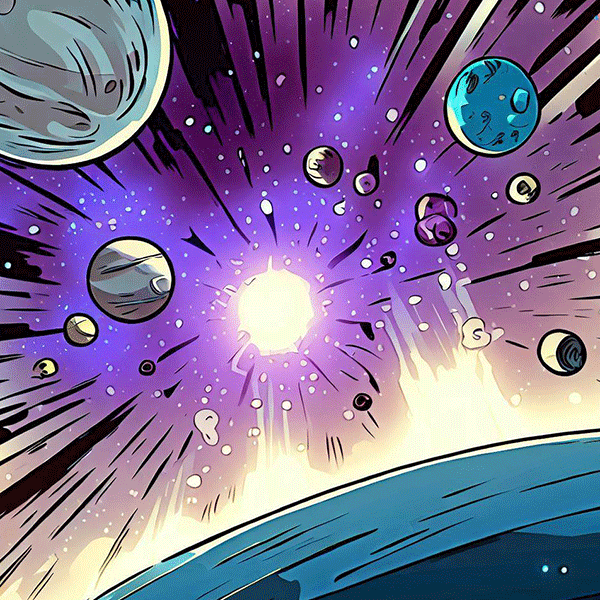Origin Story
So, about 4.6 billion years ago (give or take a few millennia), there was this massive cloud of gas and dust just hanging around in space. Then, all of a sudden, KA-BOOM! It collapsed under its own gravity.
The result? A spinning disk of stuff, with most of the mass gathering in the center to form a protostar. When temperatures got hot enough, nuclear fusion kicked in, and BOOM – our Sun was born, amid a cosmic applause. The leftover bits didn’t go to waste; they ended up forming all the planets, moons, asteroids, and comets we know and love today.
Pinpointing Our Pad – The Milky Way
Our Solar System is located in the Orion Arm, one of the many spiral arms of the Milky Way galaxy. We’re approximately 26,000 light-years away from the supermassive black hole at the galactic center. Our galaxy is huge, measuring about 100,000 light-years across and boasting an estimated 100 billion stars. And that’s just one galaxy among billions in the universe! Talk about feeling small, huh?

Meet the Planetary Posse – Our Cosmic Neighbors
Let’s get acquainted with our planetary neighbors, each with its unique quirks and characteristics:
- Mercury – Mercury is the closest planet to the Sun, experiencing scorching day temperatures and freezing nights due to its lack of atmosphere.
- Venus – Venus is like Earth’s evil twin. It might look pretty from afar, but with surface temperatures hot enough to melt lead and clouds of sulfuric acid, it’s not exactly a vacation spot.
- Earth – Good ol’ Earth, the only place known to have life and, more importantly, pizza.
- Mars – Mars, the rusty red planet, boasts the tallest volcano and the deepest canyon in the solar system.
Up next, we have the asteroid belt, a cosmic junkyard full of rocky leftovers from the early Solar System.
- Jupiter – Jupiter, the big boss of our Solar System, has a storm so large (the Great Red Spot) that it could swallow Earth whole!
- Saturn – Saturn is the bling king of planets, sporting spectacular rings made of ice particles, rock, and dust.
- Uranus – Uranus spins on its side, making it the oddball of the family. It’s also a beautiful blue color thanks to methane in its atmosphere.
- Neptune – Neptune has the wildest weather in the Solar System, with supersonic winds that would give any hurricane a run for its money.
Beyond Neptune lie the dwarf planets, including everyone’s favorite underdog, Pluto, and the Kuiper Belt, a far-out field of icy bodies.

Asteroids and Meteors – Space Rocks Rock!
Asteroids are the remnants from the early Solar System. They hang out in the asteroid belt between Mars and Jupiter. Some are small, but some are big enough to be minor planets. When these space rocks collide with Earth, they can cause quite a ruckus, like the one that likely helped wipe out the dinosaurs.
Meteors, on the other hand, are often remnants of comets. When they enter Earth’s atmosphere and burn up, they create a brilliant streak of light in the sky – a shooting star! If a meteor survives its fiery descent and strikes Earth, it becomes a meteorite. These space rocks and the craters they create, like the Moon’s surface or Arizona’s Barringer Crater, provide valuable information about our Solar System’s history.
Life Beyond Earth
The million-dollar question remains: Is there life on other planets? Scientists are continually searching for signs of life, focusing on places like Mars and the moons of Jupiter and Saturn. With the discovery of exoplanets (planets outside our Solar System), the possibilities seem endless. So, while we haven’t found any extraterrestrial buddies yet, we can’t rule them out. After all, the universe is a pretty big place.
